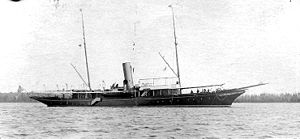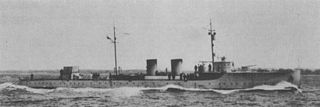
USS Winchester (SP-156) was an armed yacht that served in the United States Navy as a patrol vessel from 1917 to 1919. Prior to and following World War I, Winchester was a private yacht, later renamed Renard. In World War II, Renard was requisitioned for use in the Royal Canadian Navy as a patrol vessel, keeping her name. She was returned to her owners in 1944.

USS Nightingale (SP-523) was a Nightingale-class patrol boat acquired by the U.S. Navy for the task of patrolling coast and harbor waters of the United States.

USS Kanawha II (SP-130)/USS Piqua (SP-130) -- was a yacht acquired by the U.S. Navy during World War II. She was placed into service as an escort for Allied convoys traveling across the dangerous North Atlantic Ocean. German U-boats were active in sinking Allied ships, and Kanawha II provided a valuable service as a lookout and in one instance attacked one and drove it off. Post-war she was returned to her pre-war owner in July 1919.

An armed yacht was a yacht that was armed with weapons and was typically in the service of a navy. The word "yacht" was originally applied to small, fast and agile naval vessels suited to piracy and to employment by navies and coast guards against smugglers and pirates. Vessels of this type were adapted to racing by wealthy owners. The origin of civilian yachts as naval vessels, with their speed and maneuverability, made them useful for adaptation to their original function as patrol vessels. In the United States Navy armed yachts were typically private yachts expropriated for government use in times of war. Armed yachts served as patrol vessels during the Spanish–American War and the World Wars. In the latter conflicts, armed yachts were used as patrol vessels, convoy escorts, and in anti-submarine duties. In the United States, yachts were purchased from their owners with the owners given an option to repurchase their yacht at the close of hostilities.

USS Sultana (SP-134) was a yacht acquired under a free lease by the U.S. Navy during World War I. She was outfitted as a patrol craft and was assigned to escort duty in the North Atlantic Ocean. She served honorably—rescuing survivors adrift in the water and protecting cargo ships from submarine attack—and was returned to her owner at the close of the war.
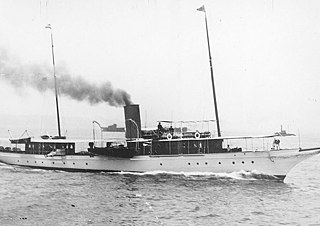
USS Wacondah (SP-238) was an advanced-design yacht acquired by the U.S. Navy during World War I. She was outfitted as an armed patrol craft assigned to guard the New York City harbor against German submarines and to provide escort protection to commercial ships. Post-war she was sold and continued her maritime career as the yacht Intercolonial.
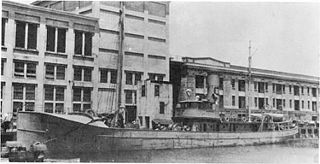
USS Utowana (SP-951) – also known as USS Victorine (SP-951) -- was a fishing trawler acquired by the U.S. Navy during World War I. The Navy had planned to use her as a minesweeper based out of Kittery, Maine; however, Utowana spent most of her service time operating as an armed patrol craft, responsible for escorting Allied ships across the dangerous North Atlantic Ocean. She served through the war and the armistice before returning to the United States for decommissioning.
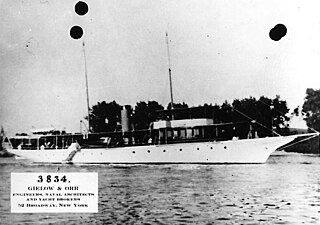
USS Zoraya (SP-235) was an armed yacht that served in the United States Navy from 1917 to 1919.

The third USS Wanderer (SP-132), was an armed yacht that served in the United States Navy from 1917 to 1919.

The fifth USS Despatch (SP-68), later PY-8, originally USS Vixen (SP-68), was a yacht that served in the United States Navy as a tender from 1917 to 1919 and from 1920 to 1921.

USS Joyance (SP-72) was an armed yacht that served in the United States Navy as a patrol vessel from 1917 to 1919.
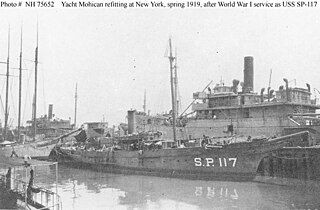
The third USS Mohican (SP-117), later USS SP-117, was an armed yacht that served in the United States Navy as a patrol vessel from 1917 to 1919.

USS Hopestill (SP-191) was a United States Navy patrol vessel in commission from 1917 to 1919.

The first USS Sabalo (SP-225) was a United States Navy patrol vessel in commission from 1917 to 1919. Following World War I, Sabalo was sold to private interests before returning to service as a patrol vessel in World War II, this time with the Royal Canadian Navy, renamed Cougar. Returning to private ownership following the war, the vessel sank in a hurricane in 1950.

USS Vergana (SP-519), later OYP-519, was a United States Navy patrol vessel in commission from 1917 to 1919.

USS Kestrel II (SP-529) was a United States Navy patrol vessel in commission from 1917 to 1918.

USS Raeo (SP-588) was a United States Navy patrol vessel in commission from 1917 to 1919. Prior to her U.S. Navy service, she operated as the motor passenger vessel Raeo from 1908 to 1917. After the conclusion of her U.S. Navy career, she served as the fishery patrol vessel USFS Kittiwake in the United States Bureau of Fisheries fleet from 1919 to 1940 and as US FWS Kittiwake in the Fish and Wildlife Service fleet from 1940 to 1942 and from 1944 to at least 1945, and perhaps as late as 1948. During World War II, she again served in the U.S. Navy, this time as the yard patrol boat USS YP-199. She was the civilian fishing vessel Raeo from 1948 to 1957, then operated in various roles as Harbor Queen from 1957 to 1997. She became Entiat Princess in 1998 and as of 2009 was still in service.

USS Owaissa (SP-659) was a United States Navy patrol vessel in commission from 1917 to 1919.
The second USS Wissahickon (SP-852), which also served as USS SP-852, was a United States Navy patrol vessel in commission from 1917 to 1918.

USS Audwin (SP-451) was a patrol vessel that served in the United States Navy from 1917 to 1919. She then was a survey vessel in the United States Coast and Geodetic Survey from 1919 to 1927.
